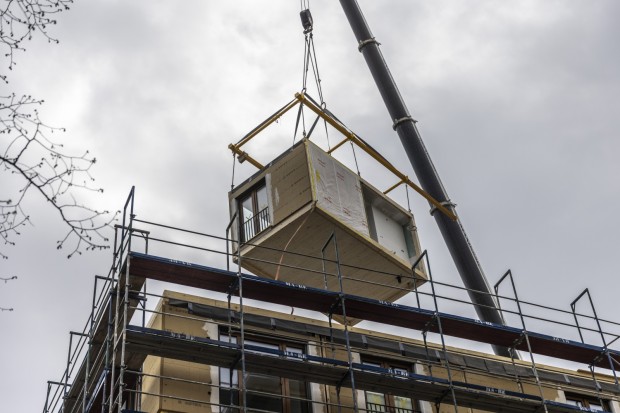Modern technology has facilitated the development of various methodologies for constructing new houses. One of these methods is modular building, which involves constructing a house off-site and then assembling it on the site where it will be built.

(Photo : Getty Images/Maja Hitij )
How Do Modular Homes Build?
Modular homes are constructed in factories, often located a significant distance from their eventual sites. These homes are built in smaller, connectable components, referred to as modules, which give modular building its name. Once on-site, each segment is constructed according to applicable specifications and prepared for incorporation into its respective slot.
When it leaves the constructing facility, a modular home may be between 70% to 90% finished. The level of completion depends on the features selected by the homebuyer and the design of the floorplan. Buyers often associate quality with the fit and finish included in the final ten to thirty percent of development. Since these factories are extensive and work indoors, unlike stick-built homes, they do not encounter the environmental stressors that stick-constructed homes undergo for months during creation.
The rapid construction process is one of the primary benefits of modular and prefabricated dwellings. Unlike conventional building, modular homes are constructed simultaneously with site preparation, allowing for less time spent on construction and quicker occupancy. Moreover, the controlled industrial environment significantly reduces the amount of trash produced throughout the construction process, contributing to a reduced impact on the environment.
Another significant advantage of modular homes is their adaptability to various environments, including different climates and terrains. The diverse temperatures of Southeast Asia, ranging from tropical to desert, present traditional architecture with distinct challenges. However, these conditions can be engineered and surpassed in the construction of modular dwellings.
Also Read: Unveiling the Hidden Price Tags: The Cost of Building Your Dream Home 2024
Sustainability of Modular Homes
As a form of prefabrication, modular construction is at the cutting edge of environmentally responsible building practices. It reduces the waste problem that plagues the industry and maximizes the use of recyclable materials.
The modular building method benefits from a controlled manufacturing environment, making it simpler to be accurate in the utilization of materials. It is possible to set aside any supplies not used for the current project, without even leaving the facility. As a result, the need for demolition is reduced, and materials are kept in a condition that allows them to be recycled at the end of their useful lives. Factory building also avoids waste related to weather damage, which is unavoidable when building on-site.
Reducing emissions caused by frequent site deliveries is yet another significant environmental benefit that modular construction offers. It was shown to emit about half of the greenhouse gas emissions that conventional site-built buildings do, around 3,450 kgCO2-equivalent in opposition to 6,500, as discovered in a 2021 research on new construction in Pakistan.
On the other hand, compared to construction projects created on the site of installation, modular construction results in a lower level of ecological discharge. By constructing the components of the home inside of a factory, eco-friendly modular homes are constructed in a manner that is less disruptive to the location where they are installed and results in less pollution than conventional construction methods
Related Article: How Innovative Modular Construction is Paving the Way For Extraordinary Homes Worldwide







